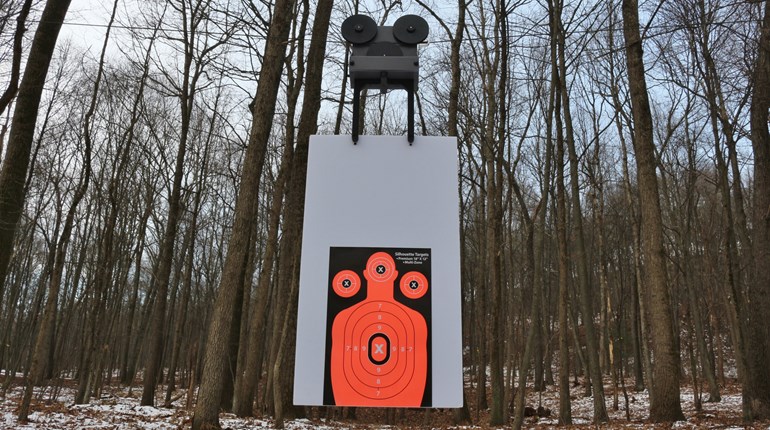
Ah, Grandpa’s old .30-30 Win. I regard it as the second-most popular whitetail deer cartridge, as it has put nearly as much meat on the table as .30-06 Sprg. Whether you run a family heirloom, or one of the modern production rifles chambered in this venerable cartridge, you are always in for a terrific hunting experience. While we all love to take this rifle out of the safe for that once-a-year hunt, we really owe it to our quarry to practice with it a little more. An exceptionally light round on the shoulder, with the right handloads .30-30 Win. can also be very affordable to shoot.
Handloads for a hunting rifle? Yes!
I’ve never understood the concept that accurate ammunition isn’t required for big-game hunting. This is absolute nonsense, especially with lighter rounds that require better shot placement. The old argument is that “I’ll never shoot it enough to pay for the equipment”, thinking which, in itself ,is heavily flawed. Shooting is a perishable skill, and learning to judge distance and trajectories takes frequent practice to master. Furthermore, if your ammo is three m.o.a. and your skills are three m.o.a., your effective range on a deer is really less than 100 yards. Conversely, If you can produce repeatable one or two-inch groups at 100 yards than there shouldn’t be any moral dilemma associated with a 250-yard shot. However to earn this skill, you are going to need quality ammunition, and lots of it.
With that in my head, I decided it was time to reload this old workhorse and see what modern components can do for it. The .30-30 Win. was one of the first cartridges to be loaded with smokeless powder. The first time it was handloaded was with Hodgdon 4895 for cryin’ out load! It only makes sense to experiment with new components to improve its ballistics and downrange performance. At the top of this list is the powder itself. The world of boom-flakes has come a long way since 4895, and it stands to be better examined. Aside from improved efficiency, modern smokeless powder has picked up features like temperature insensitivity, and copper-fouling removal technology. Looking over the data at hodgdonreloading.com, the two powders that garnered our interest were IMR 4166 and Hodgdon CFE 223. IMR 4166 is part of their new Enduron line that launched just a few years back. The IMR Enduron line is similar to Hodgdon’s Extreme Extruded line, in that it is temperature insensitive. However, to up the ante the Enduron line also utilizes copper fouling reducing technology to help keep your bore free of the hard to remove copper. CFE 223 is the first powder in the Hodgdon lineup to offer this copper-fouling eraser technology, and it carries that fine spherical shape that flows through a powder measurer so perfectly.
Next, we had to consider the projectile. Sure, inexpensive round-nose and flat-point bullets are available in droves, but what about when you spot that trophy buck across a field, just as you exit the tree line? Suddenly your “brush gun” load is starting to lose its luster. If you want to stretch the legs on this old boy, I highly recommend the Hornady FTX bullet. With its elastic tip, it is safe in tubular magazines and is one heck of a performer past 100 yards. Past experience with this projectile put it square in the center of my reloading bench for this project.
We then grabbed a box of Hornady brass and CCI BR-2 primers, and had everything we needed on the component side. I get a lot of flack from hunters when I tell them that I use the best primers that CCI has to offer. But hey, the accurate ammo cuts down what I would spend in the meat department in the supermarket, so it pays off. While we’re on the topic of things that pay for themselves, there is almost no reason to buy cut-rate dies, as long as Hornady is running their “Get Loaded” promotion. The box of bullets that you get for free with their custom-grade dies is nearly the value of the dies themselves, so why pay more for inferior tools?
We printed out our loading data and got right to work, loading rounds in half-grain increments from the minimum to the maximum with each powder. We gathered our overall length from Hornady’s Leverevolution factory .30-30 Win. rounds, and sat our bullets to the cannelure. If you are familiar with my work, then you know I don't completely believe in crimping. After all, what sort of accuracy gain can really be achieved by scarring the bearing surface of the bullet? However being that rounds in a tubular magazine are pressed against each other during recoil, it just makes sense to put a crimp on them. After all, variances in overall length from shot to shot will hurt accuracy as well, so it's a pick-your-poison type of endeavor.
On our range day, we were fortunate enough to catch a bit of that perfect, crisp autumn weather typical of a Northeastern October. At the 100-yard line sat our Henry H009 rifle in a Caldwell BR competition rest system. We topped our rifle off with a 3-9X Nikon Prostaff optic to ensure a precise point of aim, and quickly zeroed it.
We started with the IMR 4166. As we fired throughout the spectrum, we observed a minimum velocity that hovered around 1775 fps and topped off at 1991 fps as we approached the maximum safe charge. We had a great group going with a charge weight of 28.4 grs. but ruined it with one flyer that opened it to about three inches. With a group like this, I would typically retest the load, or even slightly adjust seating depth. I might even reduce the amount of crimp, as our tiny one-eighth of a turn held the bullets in place under the light recoil.
Next, we experimented with the CFE 223 powder, and again went through the entire safe spectrum of powder charges. We saw an average velocity of 1919 fps for our lightest charge all the way to 2021 fps for our highest. Accuracy was acceptable with our best results giving us a 2.5” group when you tally in the flyer. Although this powder wasn’t the most accurate, the fine spherical shape allows for mass production on a progressive press, making it a great choice for the high-volume shooter.
As we packed up for the day, we reflected on the simplicity of creating a hunting round that is more than adequate for its intended use. Even at lower velocities, the FTX bullet will expand reliably and down game in its tracks, as long as the hunter does their part. If you enjoy your .30-30 Win., consider trying these components in your own rifle—you might be surprised to find out what it is capable of. Besides, there’s nothing wrong with a little shootin’ in between hunting seasons.
Additional Reading:
Review: Sierra GameChanger Ammo
Top 5 .17 HMR Hunting Loads for 2019
































